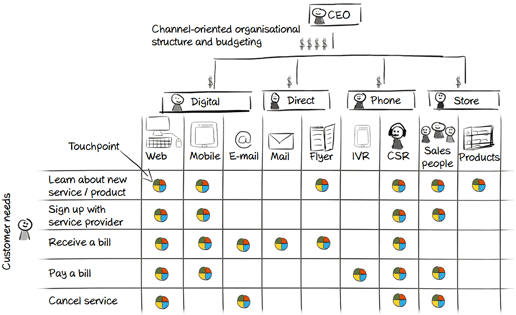I want to add some nuance to the now common bashing of Innovation Labs, claiming that 'Innovation Labs just don’t work'. Indeed, it appears some innovation labs are being closed down, but is that ratio significantly higher than the shutdown of departments or other corporate (sub-) structures? Or is it that the closure of an innovation lab tends to come with higher media coverage and exposure?
Beyond that bias, I’d like to offer potential explanations of why innovation labs are actually failing.
Corporate Innovation: A Framework for Defining Innovation Initiatives
Corporates around the world are investing in innovation hubs or labs, hackathons, silicon valley trips, agile trainings and design thinking workshops to innovate, to become more agile, customer-centred, purpose-driven, profitable, efficient or disruptive. I wanted to know how corporates make sense of the sometimes vague topic of innovation, how they manage innovation initiatives and how they allocate funding. Here’s an attempt to craft clarity through a framework for managing innovation in corporates.
Corporate innovation: Team Setup, Budgeting Strategies and Return On Investment (roi)
In a previous article, I have outlined the specifics of a framework I’ve developed for defining innovation initiatives. In short, the framework differentiates corporate innovation initiatives by focus area (internal vs external) and innovation creation (problem-focused vs opportunity-driven). The resulting 4 quadrants can be labelled as optimise, improve, create, and reinvent. This follow-up blog post focuses on the right team setup, budgeting strategies and return on investment (roi) for each quadrant.
Successful innovation patterns for a crisis
Corporate innovation has been under serious pressure during covid19. Innovation budgets were frozen, teams were made redundant and innovation hubs came to a halt. Why did this happen, what can we learn from this crisis (for the next), and what does this tell us about the standing and maturity of corporate innovation?
In this article, I present three innovation patterns you can apply to deal with innovation in uncertain times. I lay out pros and cons of each pattern and hope to give practical advice.
What is your paradigm of change?
Change is a buzz-word that is connected to a broad spectrum of emotions. You might embrace or resist change or the word simply makes you cringe. You might see the need for change in your organisation or you might be tasked with a specific project that relates to change - I invite you to take a step back and think about your own perspective on change: How do you see change and how is this impacting your work? How does your personal perspective on change differ from your organisations’ perspective? What are the benefits and shortcomings of different perspectives?
Part 1: You’re building or managing an innovation hub? This post is for you!
Innovation hubs – the buzzword of buzzwords. Every organization wants one, all the big names have one. The promise sounds great – a space that fosters innovation. But do they deliver? And what differentiates successful from underperforming innovation hubs? I helped organizations in New Zealand, the US, and Europe build, manage, and operate innovation hubs and my answer is: yes, some innovation hubs do really well. Learn from my #10 lessons learned and increase the productivity of your innovation hub.
Part 2: You're building or managing an innovation hub? This post is for you!
In 2017 I published 10 lessons learned when building or managing innovation hubs and the article was read by more than 10.000 people from all over the world. Requests came from the US Airforce, startups from Kenya and Nigeria, medical corporations from Switzerland, New Zealand Universities, public sector organizations in the UK, and banks in the Middle East. Some innovation hubs are doing extremely well, but many are still falling short of expectations. In this follow-up post, I want to share 5 more pitfalls to avoid.
Business model innovation - Not another Uber story
Uber Technologies Inc, the world’s largest provider of personal transport has surely made it into the top 10 of water-cooler conversations. Digital, technology, and disruption are frequently used buzzwords when telling the Uber story. Uber was founded in 2009 and is currently present in 60 countries and more than 300 cities. Despite extensive media coverage (mostly about countries that are trying to ban Uber), few people actually understand what makes Uber successful. Even most conventional taxi drivers fail to understand how Uber manages to offer a service to drivers who don’t have a taxi license. Many believe it is innovative digital technology that allowed Uber to disrupt the taxi industry. It is not!
Don’t build a mobile app just because you can! A framework for service design
Unlike products, services are delivered over time through a series of interactions between a customer and a service provider, which we call touchpoints. Service companies are typically structured around channels e.g. digital, direct, phone, etc. As a result, the budget is also assigned in the same way. In this article I present a simple framework you can use to design services across organizational silos, resulting in a better customer experience, increased efficiency, and cost savings.








